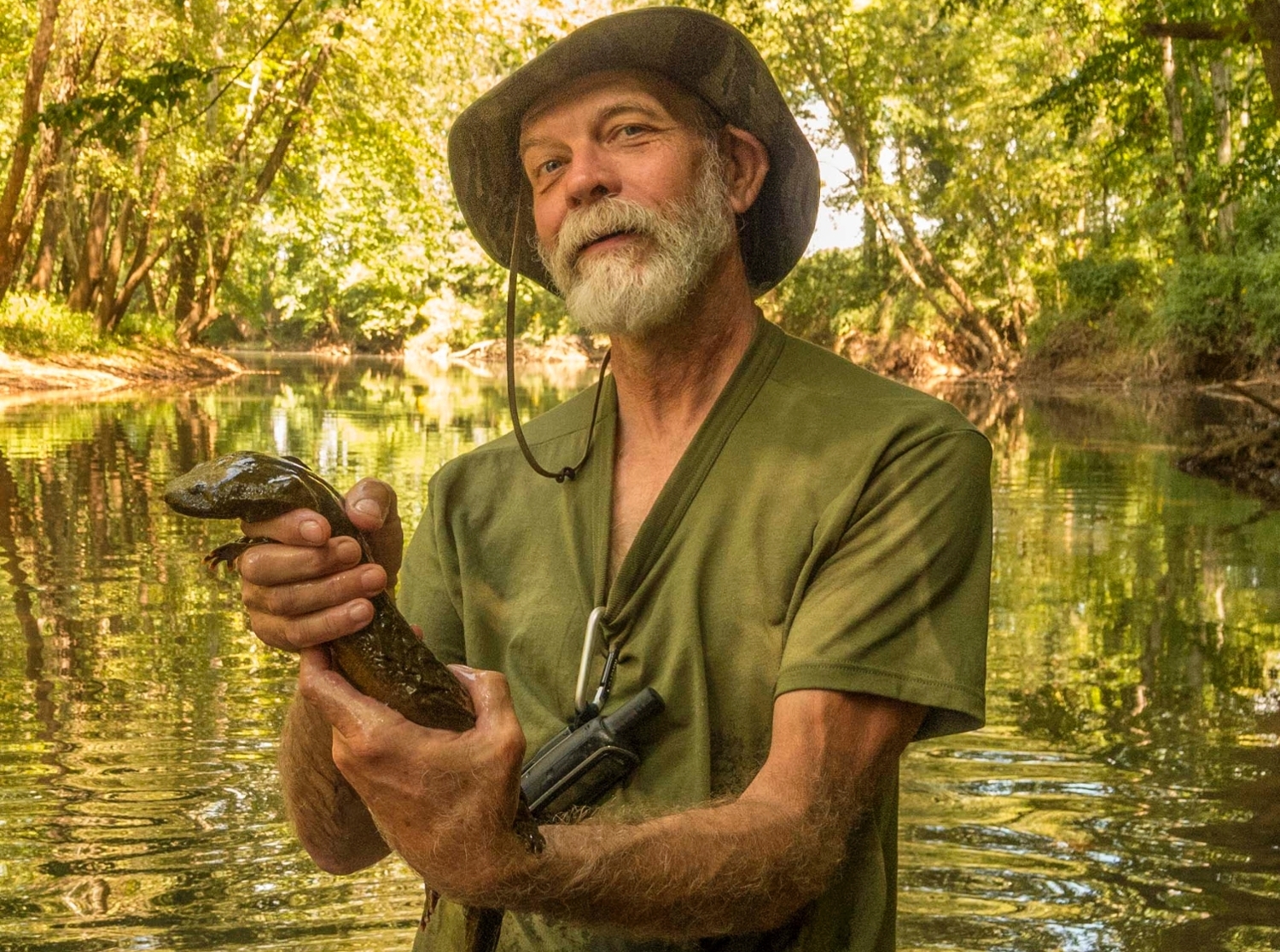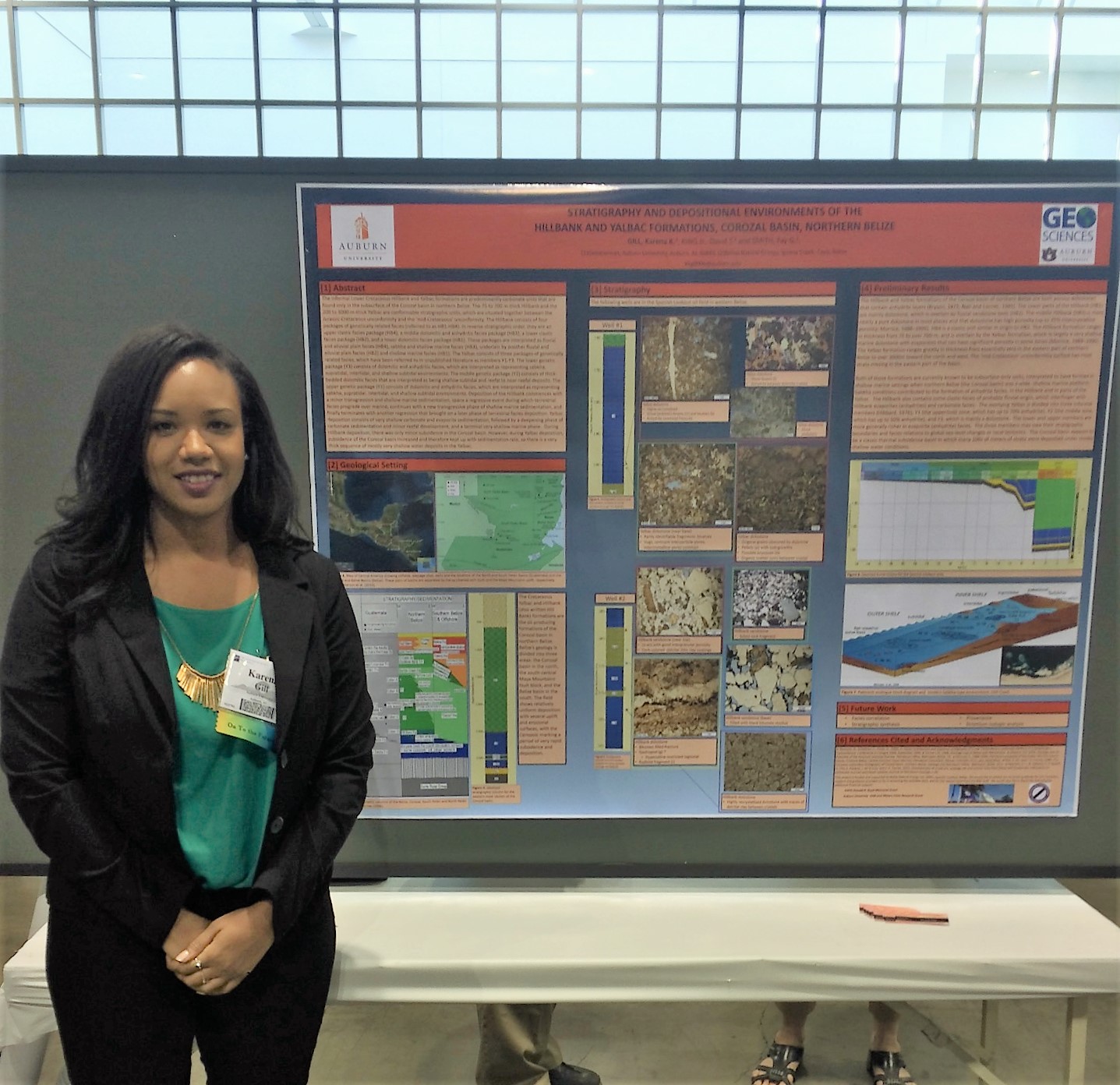
|
|
The long, hard road for Hellbenders
On a hot, late August afternoon in 2016, an expedition of scientists carefully turned onto a narrow, one-lane, dirt road that ran parallel to the railroad tracks. Their trucks precariously balanced canoes and kayaks as they weaved a short distance marked by deep potholes. In single file, they arrived at the back entrance to the property, property owned by a family from scientist Jeff Garner’s childhood.
“The gate’s locked,” shouted Garner to the team. “I know another way in!”
Garner grew up in Lauderdale County, Alabama. A biologist with the Alabama Department of Conservation and Natural Resources Division of Wildlife and Freshwater Fisheries, Garner’s local connections were the team’s key to accessing the more remote portions of Butler Creek, portions that run through private property.
The group, led by James Godwin, an aquatic zoologist with the Auburn University Museum of Natural History’s Alabama Natural Heritage Program, was searching for the Eastern Hellbender, the largest and one of the longest living salamanders in North America. A Hellbender can reach more than 2 feet long and can live for decades. Once found abundantly throughout its native range, which extends from northern Alabama and Georgia to New York, Eastern Hellbender populations are experiencing steep declines. In fact, the species was thought to be completely eliminated from the state of Alabama, but unconfirmed sightings in recent years have given scientists new hope that the species still exists in the state.
In 2015, another team of scientists working under Godwin’s direction found an Eastern Hellbender in Alabama in the Flint River, not far from the Tennessee border.
Over the course of the next year, Godwin continued to organize Hellbender expeditions but was unsuccessful in locating the creature a second time, despite the animal’s preference for a very specific habitat – swift-moving, clear-water streams or rivers with rocky bottoms in the northern Alabama, Tennessee River drainage basin.
To continue reading, click here.
|
|
Auburn University spearheads cutting-edge, one-of-a-kind outreach initiative that provides center for K-12 robotics education

The Southeastern Center of Robotics Education, or SCORE, is a new, innovative Auburn University outreach initiative designed to more effectively develop and deliver robotics education to K-12 students and teachers. The SCORE program centralizes the robotics education activities already underway in Auburn’s College of Sciences and Mathematics, College of Engineering and Auburn University Aviation Center, and provides a mechanism for growth in the area of robotics education outreach. The SCORE initiative is the only center of its kind in the country.
By centralizing robotics programming, faculty and staff at Auburn are better able to serve K-12 teachers and students with a diverse and targeted approach.
The programs offered through SCORE aim to provide education on the use of robots on the land, in the air, and in the water, thus reflecting Auburn University’s commitment to research, outreach and instruction as a land, sea and space grant institution.
The program already incorporates both land-based and air-based robots, with a focus this year on offering drone-based programs, camps, clubs, workshops and competitions. In 2017-2018, SCORE will expand to include aquatic robots.
“Jobs in today’s industry require a much higher level of technical skills than 20 years ago, and will certainly require an even higher level of STEM-based skills 20 years from now,” said Mary Lou Ewald, director of outreach for the Auburn University College of Sciences and Mathematics. “More than ever before, it is critical that we invest in preparing the next generation of skilled workers – our future economy depends on it.”
SCORE will be officially launched at the South’s BEST Robotics championship on December 3-4 at the Auburn University Coliseum. South’s BEST, or Boosting Engineering, Science, and Technology, is the premier robotics program hosted by Auburn University and is included as a SCORE program. BEST Robotics is a dynamic community-based enterprise that aims to inspire middle and high school students to pursue careers in engineering, science, technology, and mathematics through participation in a sports-like science and engineering-based robotics competition.
To continue reading, click here.
|
|
Gill awarded at National Association of Black Geoscientists Annual Conference

Karena Gill, graduate student in the Department of Geosciences, received second place at the National Association of Black Geoscientists Annual Conference, or NABG. She is the first Auburn University representative to be awarded by NABG.
Gill’s research focuses on carbonate petrology, looking at reservoirs in Belize to understand their provenance and link it to the regional geology of Central America and the Caribbean.
“On both occasions, this was a proud moment,” said Gill. “It was very rewarding to be able to bring some recognition to Auburn, but it also sparked several conversations on diversity and inclusion, and certainly opened up opportunities for the recruitment of underrepresented minorities in the geosciences field.”
Gill received her undergraduate degree at the Colorado School of Mines and majored in geological engineering with a focus on exploration geology. While there, she collaborated on research with the United States Geological Survey, or USGS, to look at metal isotope systems as a result of mine drainage and analyze the effects on local flora and fauna.
“Ms. Gill has been an outstanding graduate student who is very diligent in her pursuit of knowledge,” said David King, professor in the Department of Geosciences. “Her research centers on two previously undescribed subsurface formations in the northern part of Belize. This work, which will be of keen interest to oil exploration companies operating in this area, is pioneering in nature and will be the first of such research to be published on these formations in the open scientific literature. Her findings, so far, have helped us understand the nature of ancient environments and sea-level changes, as well as the petroleum potential of these ancient strata, which formed during a time period call Cretaceous, 140 to 66 million years ago.”
Gill is from Belmopan, Belize.
|
Upcoming Events:
COSAM Today is a bi-monthly newsletter provided by the College of Sciences and Mathematics Office of Communications and Marketing.
We want to hear from you! Do you have news to share? Let us know by filling out this form. If you have questions, send an email to ceh0012@auburn.edu.
For more news about COSAM, visit the website at www.auburn.edu/cosam.
To unsubscribe from this newsletter, send an email to cosam@auburn.edu.
|



